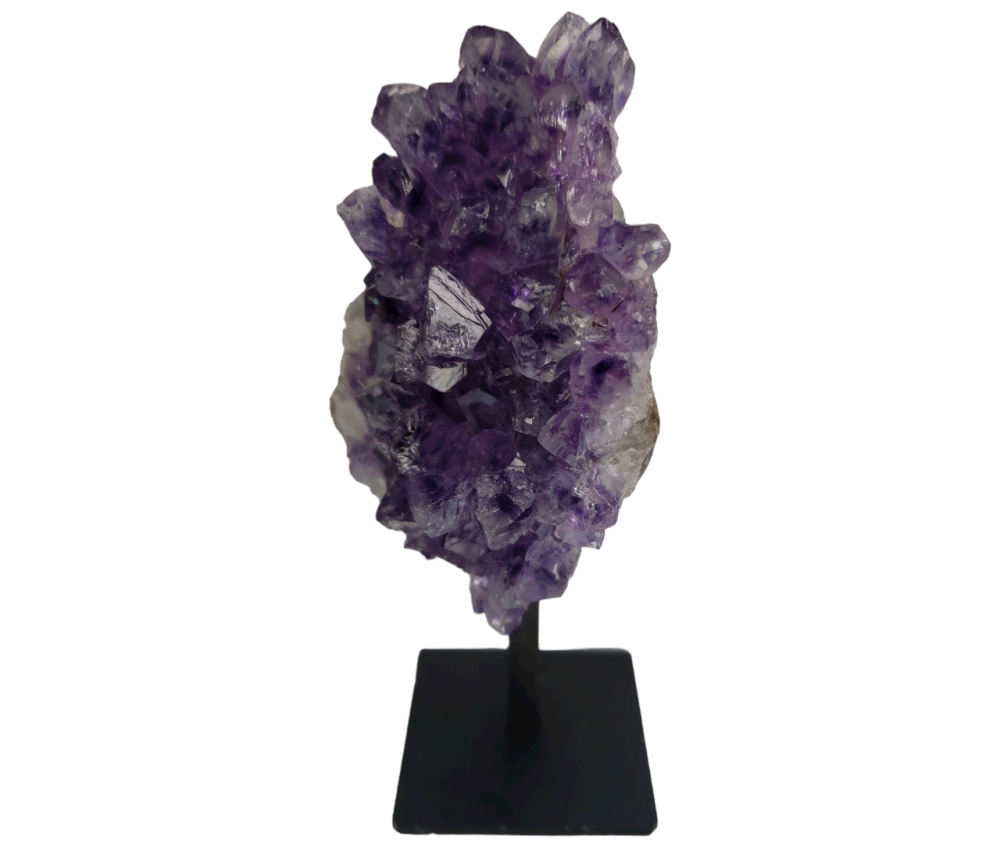We use cookies to make your experience better.
TimmersGems has a new website, existing customers also need to register again.
Amethyst from the “Rockshop” fistsize series on black stand.
In addition to the small pieces, we now also have the 6 most popular stones on pin in a larger version! Packed per 3 pieces and available in Amethyst, Black Tourmaline, Sodalite, Kyanite, Rock Crystal and Green Aventurine
SKU
11942
Amethyst is a violet variety of the mineral quartz (SiO2) and is the most sought after stone of the quartz group. Etymology: The name comes from the Greek αμεθυστoς (amethystos). Amethyst was already known to the Egyptians, Etruscans and Romans, and Pliny the Elder has already described amethyst. In ancient China small gems were cut from amethyst. In the Middle Ages, amethyst was also highly valued in Europe. It was called Bishop's Stone because it used to be a beloved gemstone for ecclesiastical dignitaries, and it is said to possess magical powers. It was the symbol of the lovers, the stone of temperance, protector against sorcery and witchcraft. With Jacob van Maerlant the explanation can be found that the stone drives out drunkenness. It has been assumed that the Greek name would mean "against intoxication": wine drunk from a cup made of amethyst would not make one drunk. Origin: Metamorphites, hydrothermal, alluvial deposits. The crystals always grow on an underlayer, the prisms are often weakly developed and because of this the spires of Spitamethyst dominate; the color is also the strongest here. These parts are tapped off, that is, broken down for further use. Burning at a temperature between 470 and 750 degrees produces pale yellow, reddish brown, green or colorless varieties. There are amethysts that gradually fade in daylight. The original color can be restored with radium irradiation. The color is caused by iron in combination with ionizing radiation. Amethyst is less attractive in artificial light. Appearance As early as the Middle Ages, Brazil could boast of its sites of amethyst, they are mined in Bahia, Minas Gerais and Mato Grosso, among others. Recently, the so-called ametrine, an amethyst-citrine, has been mined in Bolivia, in which the violet and yellow colors alternate, but the transition between the colors is sharply delineated. Amethysts are also known in the United States, namely in Montana, Maine, Georgia and Arizona. Canada, Mexico, Bolivia, India, Myanmar, Japan, China and Korea, as well as Sri Lanka, Zimbabwe, Congo and Australia are also important producers. In Russia, amethyst is found, among other places, in the Urals, Yakutsk and on the Kola Peninsula. Amethysts are also found in Armenia, Germany, the Czech Republic, Slovakia, Bulgaria, Switzerland and Ireland. Amethyst rarely forms larger pure crystals. In the British Museum is a unique cut stone of 343 carats. Other smaller stones weigh less; they are mostly from Brazil. The Smithsonian Institution in Washington D.C. even owns a 1362-carat Brazilian cut amethyst and 202.5-carat North Carolina. Amethysts were often used in state jewelry, such as Catherine the Great's scepter and the British Crown's scepter.
| Dimensions | Divers |
|---|---|
| Country of Manufacture | Uruguay |












